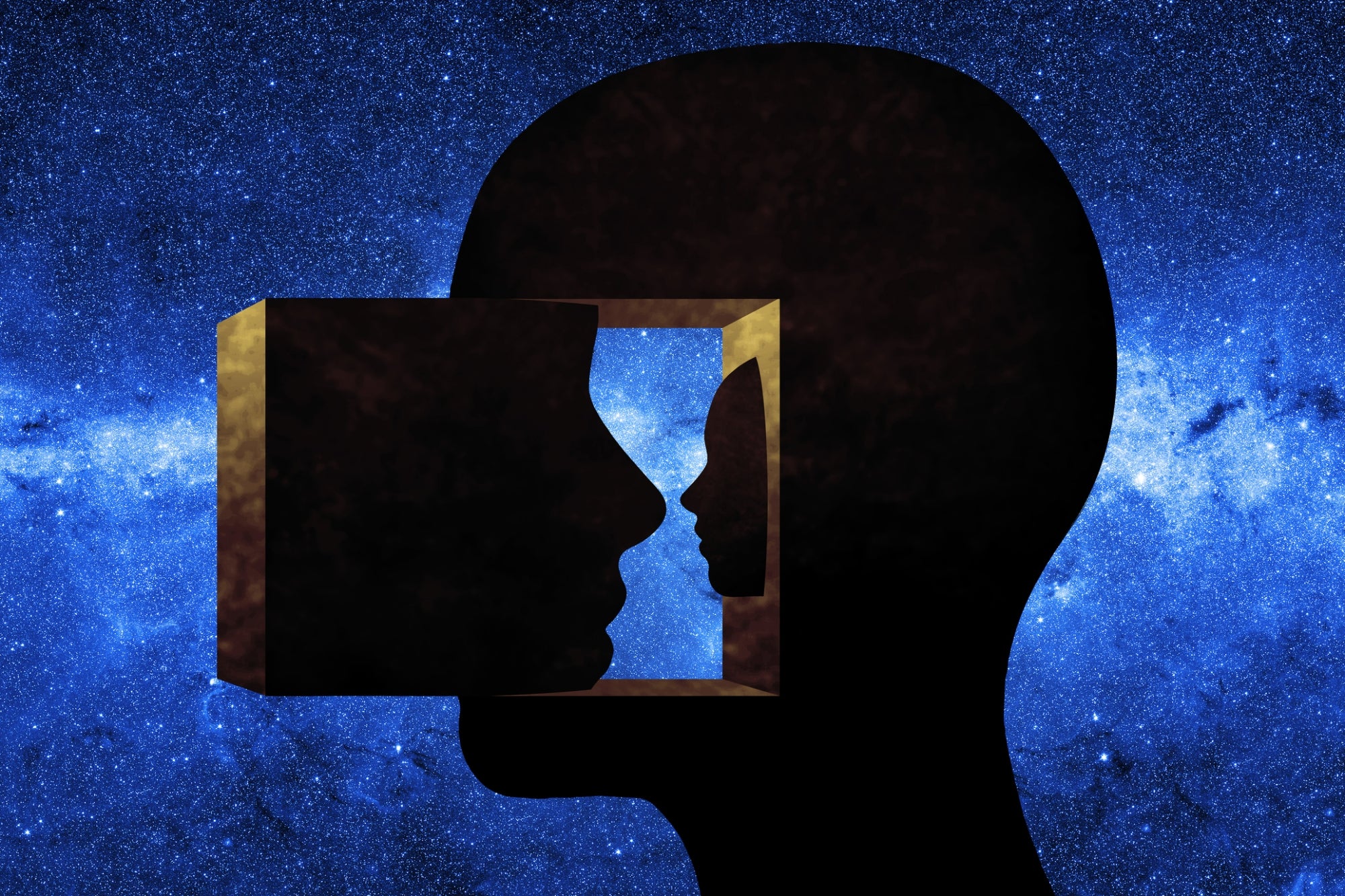- Visitor:34
- Published on:
What is God? Where is God? (Part 2)
The God is present in a thousand different ways, revealing Himself, Herself, Itself, in a thousand different ways in this world. This is Brahma prakasha. It is the radiance of divinity. Look around you. These beings are present and we relate to them as human beings. But, in-depth they are nothing but that same one Brahman, shining forth in all these ways.
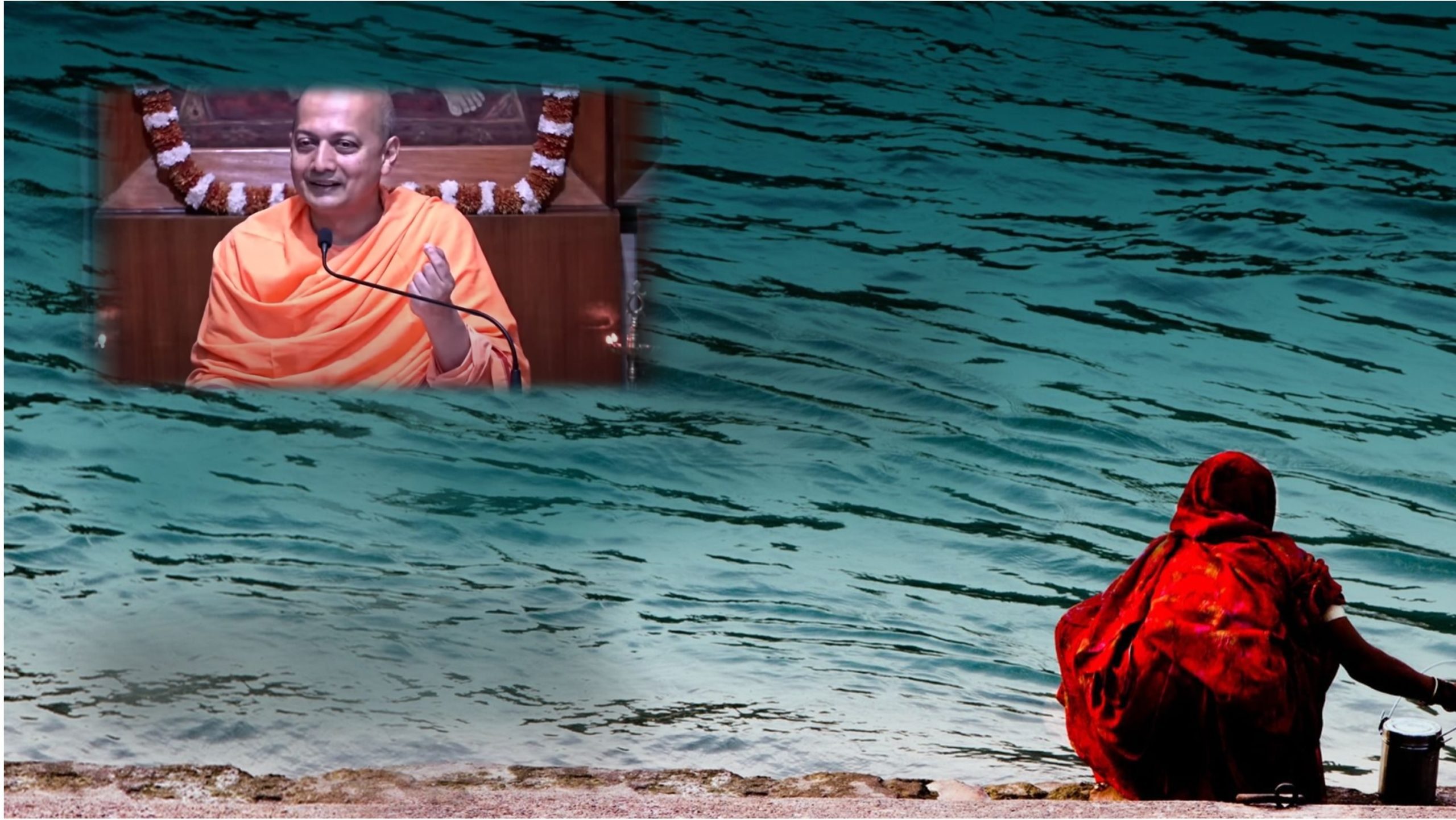
The following content is edited by Rajabhishek Dey (Centre for Indic Studies) from a talk by Swami Sarvapriyanandaji, at Ramakrishna Math, Basavanagudi, Bangalore. Being his admirer, the original speech by Swamiji is rewritten and reshaped in this article format with an intention to spread his voice more for our readers. The discussion is taken from the YouTube channel of RKMB, Bengaluru.
In investigating ourselves we find our thought and consciousness is mixed up because of Avidya. Here, the difference between “I” the consciousness, and my thoughts are not distinct to me. I don’t see the difference between “I” myself the Consciousness and my mind and the outside world that one existence along with the names, forms and activities (nama, rupa, vyavahara) which is going on. This is because of Avidya and this distinction we have to make. Apart from names and forms (i.e. not body, mind) and not the panchakoshas, I am the “witness consciousness”. Also, this is not the names and forms but the underlying undivided existence.

However, realizing these truths are little complicated and little difficult. But, it’s not a problem with Advaita Vedanta. This is more of a problem with Adhikari. The problem with us- the seeker. Our thing is we want something to grasp, we want to see, hear, smell, taste and touch. We want to think about it, praise God, love God, and feel the presence of God.
Now, what will Advaitha say?
➥“Do you want to see God?”.
➪“Yes”.
➥“Are you seeing God?”.
➪“Yes”.
➥“Well, whatever you see is not Brahman. Have you thought about it as Brahman/Atman?”.
➪“Yes”.
➥“If yes, then if you have thought about it, if you can think about it, it is are you speaking about it right?”.
➪“Yes”.
➥“Then, whatever you are speaking about, whatever it may be it’s not Brahman. If you do that it is very difficult. It is not an object of knowledge. It is not an object of our awareness rather it is the awareness itself. But whenever we say, ‘it is awareness itself’ we are objectifying”.
So, the only reason why we are unable to realize it and if it is already there and I am that all the time and also here now- I am that Consciousness, then why is it so difficult to realize?
Because of this objectifying tendency of our minds
That is why it is so difficult. Advaitha wants us to turn.

Same to “The Tenth Man Story” by Vidyaranya Swami where the person counts himself as the tenth man ultimately, Advaitha might be similar but not that easy. What Advaitha wants us is to observe the panchakosha (attention on the body, prana, mind, subtler inward). And more you move inward and more subtle until you come to the causal (the anandamaya) and from there you have to turn further inwards to the state which cannot be pointed out and cannot be said in words. Here, the panchakosha is an object. How difficult!
But the Advaithin will say, “It is not difficult. See, it is absolutely obvious”. But if it is not obvious to me then it is very difficult for me. The Upanishad will say that the Brahman/Atman identity is closer than the closest. Oh very good but still we don’t get it.
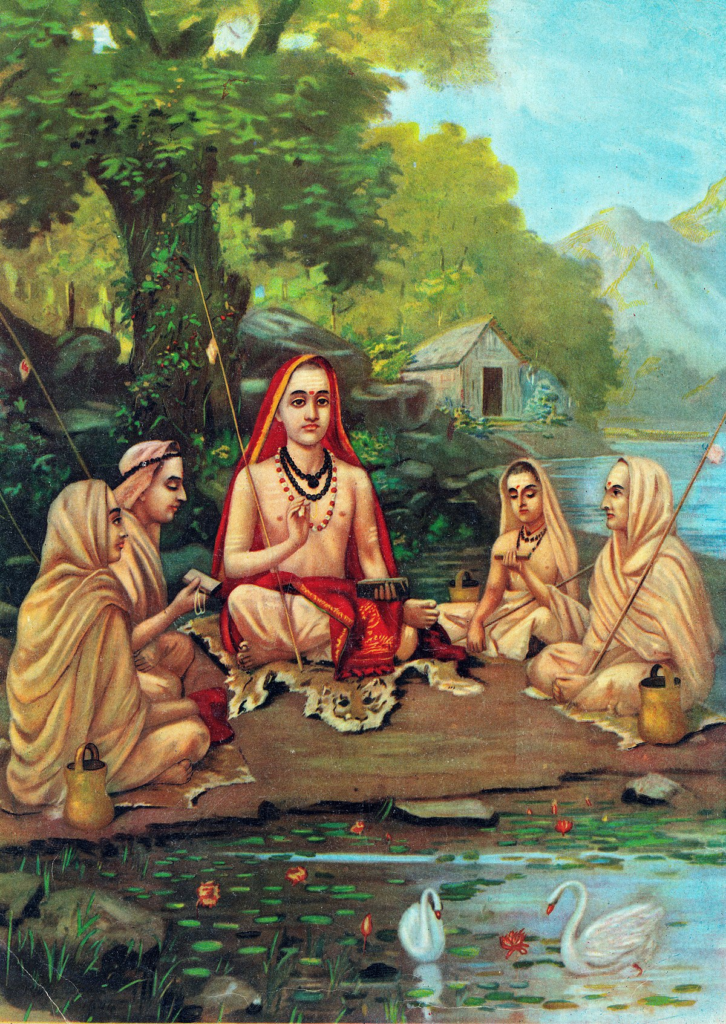
Then the Upanishad will say that it is further than the furthest. Here, Shankaracharya explains that it is closer and further but not in distance. It is because of knowing and not knowing Vidya and Avidya. He further says that the entire thing of Advaitha will become reasonably clear if you see the difference between knowledge and ignorance. Now, Sri Ramanujacarya comes next. Out of compassion, he makes it easier for us.
Do you want to see, you want to conceive of and want to love, pray and worship? If yes, then do not dilute the same Advaithik Brahman. It must be there and not turn into substandard. “You cannot dilute it”, Sri Ramanuja says, “And then the same Brahman is Ishwara, Bhagavan, Vishnu and Narayana, the Transcendent God in his Abode, Vaikuntha it exists. Here the only thing is this you have to take on faith until you have an aloukika pratyaksha and all”. Yeah, Veda is a pramana for you in a way that tells you and then it is also the knowledge for you that Srimad Narayana exists in Vaikuntha in the Transcendent form.

An attitude of a non-dualist can be understood from the example of a real sadhu, who used to be watching the glaciers and mountains all the yearlong happily for decades at Gangotri. Moreover, he used to read and translate Yoga Vashistha all the day. However, after finishing this bundle of notebooks he would throw his writings in the Ganga and start all over again. When he was asked about what is his feelings when he comes across no human face, he replied, “I am very happy now. That time I am even happier!”. Besides, real non-dualism can also not be understood by those who think of no thought, detachment from body, absolute peace or even deep sleep, no world or coma to be Advaita. Everything comes back from a causal state always as an effect. That sadhu also said, “Advaita is not for wiping out the experience of the world. Advaita makes you limitless, fearless, absolutely happy and delighted!”. You can say when I am in Samadhi I am experiencing enjoyment and when I open my eyes and interact with the world I am in more fun. Interestingly, the same person was also seen to be chanting “Srimad Narayana” hour after hour in the cold dark night with the howling wind outside closing the doors. A very interesting combination indeed!

Similarly, when we accept the image and devotion towards Narayana to be abstract, Sri Ramanuja solves the problem by saying, “The Lord is very compassionate. He comes in your heart not just in Vaikunta but also as antaryami”. That is why when a Guru gives a mantra, he can say, “Visualize the Lotus here and visualize your Ishta Devata, whichever form”. We Hindus are very liberal about whichever form you take to meditate. One can visualize same the Lord. Now you can feel why Swami Premeshanandaji said watching Sri Ramakrishna’s picture, “I see the living, not any picture”. So, you can have a living vision, the presence of God. God is in the heart.
That is why Swami Nirmuktanandaji told about Swami Akhandananda‘s saying, which he himself heard from Sri Ramakrishna, “Whoever is your Ishta devata that is the Atman of Vedanta”. Gold is the same in different ornaments. So when you are meditating on your Ishta devata repeating the Ishta mantra you are literally by the magic and blessings of the power of Maya with the Nama Rupa you are contacting the same “you”. Further, a very inspiring thing Swami Tapasyanandaji, vice president from Ramakrishna Misson, Mylapore Chennai, vice president of our order he says, “When you have got the Mantra from your Guru, know that you have got God though you don’t know it. By sadhana you have to discover it”.
So going as per Ramanuja
① first as Narayana at Vaikuntha,
② second in our hearts as Antaryami/Ishatadevata and
③ third as Avatara in human history.

This third form of God as incarnation can be seen as a form with a name and a holy Leela. In human figures, we have seen him as Rama, Krishna, and Sri Ramakrishna. These people are recorded in history, not theology, not just in faith or books. If you can catch hold of the avatara then that can be an extremely powerful way of enlightenment. Nonetheless, “One variation and special manifestation of the avatara”, Sri Ramanujacharya says, “Can be seen with the gopis in Vrindavan”. There is one location Avatar appeared as a group. Sri Krishna appeared separately for each Gopi. People have not been able to witness the Divine Mother directly, but those who have seen Sri Ramakrishna, who has recognized and talked to God, have felt the physical presence of the divine in their proximity. Thus those who are lucky enough to face such an Avatara have experienced the extraordinary with their hair raising around in the air. However, there is nothing to lament who are now not born in those Avatara’s time. This is because even though the Avatara came in front, but still many people were also there who failed to recognize them and also addressed them to be mad.

Now, from here Sri Ramanujacharya brings one more thing, a more accessible method called archavatara. He says, “We have a special method of closeness to God, the presence of God, where is God? It is in the image which is worshiped properly, installed, properly and worshiped regularly in temples”. If you go to the temple, the picture or the symbol, in which God is worshiped is God. It is not a symbol of God but an Archavatara. Eg. When one of the present-day Shankaracharyas was asked about the secret of image worship in Hinduism, he replied, “The preliminary answer is that God is imminent. God is all pervasive and in everything. If you can worship God in a particular image it helps you to realize God. It is a help. It is a support. It is of great help in your sadhana because we have this objectifying tendency. So you use this technology of image worship”. But he continues saying, “That is only a superficial understanding. The cause or the real deep reason is actually and concretely remove the misconception that it is not God.” So, we say preliminarily that we don’t worship wood, stone, image, metal, or clay. We are worshiping because this is a symbol of God. This is the meaning of the imminence of the Divine. It is Brahman. Swami Vivekananda said, “We Hindus worship a Transcendent imminent God, a god who is beyond creation, time-spaces, causation. It is sat chit ananda Brahman but also a God who is imminent through creation”.
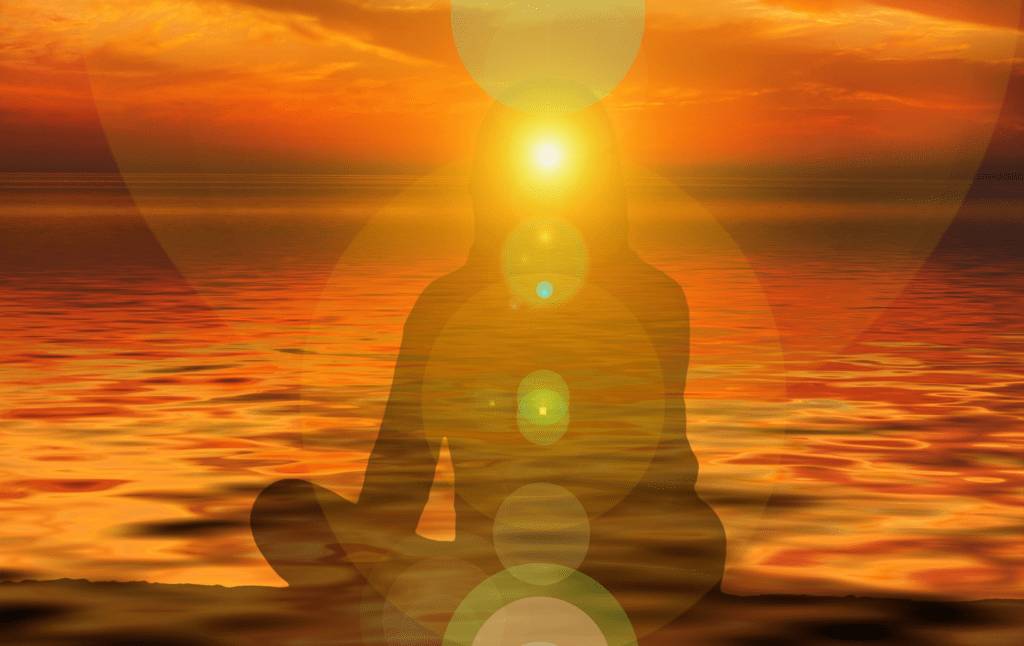
We know about waking, dreaming, deep sleep and then Turia. If you do something else than just “waking, dreaming, deep sleep”, then the Upanishad tells you that apart from that there is one very nice thing called Turia. Now the problem is if it is something separate other than waking, dreaming and deep sleep we will never get it. Because when we say this waking, dreaming, and deep sleep are separate from turia we limit turia also. The turia will become a limited reality. What the Upanishad wants to say by that Turia is distinct from waking, dreaming, and deep sleep is like what gold in the bracelet, the necklace, and the ring is not a fourth kind of ornament. Apart from the bracelet, necklace or ring it is the same consciousness that appears as the waker and in the waker’s world right now. It is the same consciousness that appears as you the dreamer and your dream world. It is the same consciousness that appears as the darkness of deep sleep. Further, it is consciousness in itself, transcendent beyond the three states but also in men. Look at the commentary of Shankaracharya when he says during tarpana, ”Actually it is not a wooden spoon, actually it is not agni/fire, actually it is not ghee actually it is Brahman”. That is the meaning of Brahman. Thus, what you think as the image is not an image. In the vision of reality, it is nothing other than Brahman appearing as that in that form.
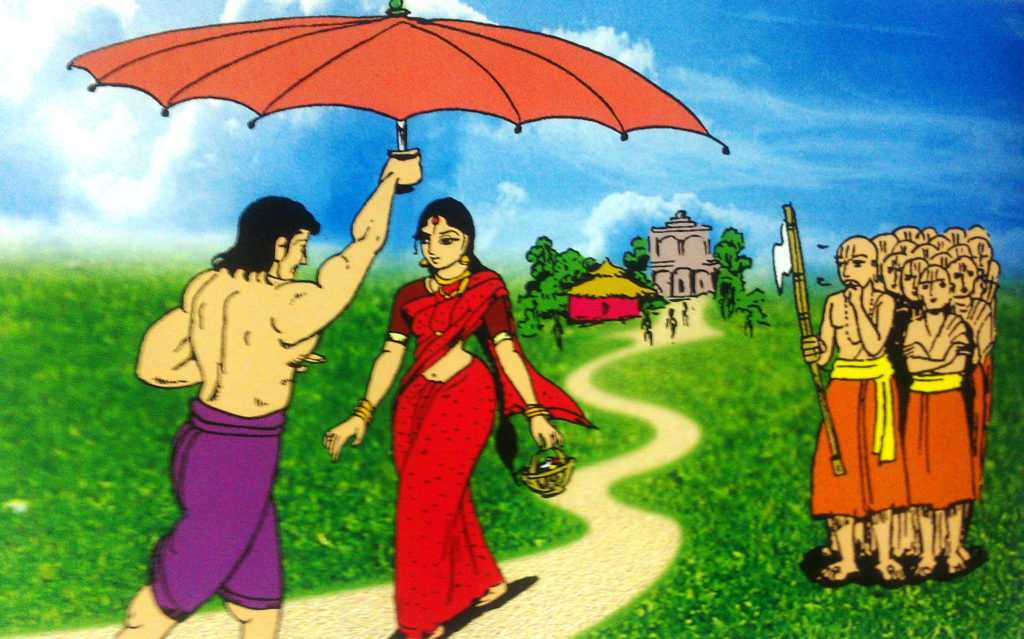
Let us now narrate a beautiful story in Srirangam, thousands of years ago. Sri Ramanujacharya was recognized as a great acharya and master at that time. The Brahmotsavam festival at Srirangam Sri Ranganatha Swamy temple with thousands of people standing with offerings. At once his disciples and the people present there noticed one young powerfully built man, standing there with an umbrella. He was holding it over the head of a young girl and looking at her continuously.

“What kind of behavior is this?”, the public complained irritatingly, “In the temple, on this holy occasion why is he behaving in this uncultured manner?”.
Ramanujacharya asked his disciples to go and call that young man.
The people started humming, “What will happen now? The acharya himself has seen this fellow useless fellow”.

As the man was summoned, he immediately put the umbrella down, walked and bowed down to Sri Ramanujacharya.
The saint asked, “Who are you? who is that girl and why are you looking at her in such a way?”.
The man said, “I am Dhanurdasa, a wrestler and that girl is Hemamba. I am looking at her because she has the most beautiful pair of eyes in the world and the universe!”.
“What kind of talk is this?”, the others went on saying surprisingly and angrily.
But Ramanujacharya calmly just said, “If I show you an even more beautiful pair of eyes, will you? Would you want to see?”.
He said, “Definitely. I want to see!”.
The Acharya replied back, “Then okay, today in the evening when the arati of Narayana Vishnu will be going on in the Srirangam temple, you please come”.
In the evening when the aarti was going on and in the dark, the light was falling part by part on the body of God’s image and as it fell on the face, Ramanujacharya touched Dhanurdasa and pointed out saying, “There you see the most beautiful pair of eyes in the universe”.

At once the man looked and saw the living face of God and went on to Samadhi. We know later, Dhanurdasa married the girl and the couple became one of the closest devotees of Sri Ramanujacharya. But, the touch of Ramanuja and seeing the beauty when the light of the aarti lamp fell on the face is the notable thing here. Thus like him when we look at the face of God with devotion and folded hands, the sins of Bad Karma of our past lives are wiped away.

Likewise another example of a monk, besides being an Advaita master from Belur Math, Ramakrishna mission can be given who used to wake up at 2 AM and start picking flowers for offering. Till the others used to rise 2-3 hours later he used to have his half of days completed already. As he was asked about his routine in spending so much time his simple answer was, “You know I believe if you do even a little bit for the Lord he will not abandon. He does not forget. So do a little bit”. This is the glory of worshiping archa. So, go even further apart from considering it as an image.

Another instance can be given from a teaching of Sri Ramakrishna describing the rising to the level of realizing “Aham Brahmasmi “or turning around and seeing saguna Brahman. For this, he gives the example of rising a staircase and reaching the roof at the top leaving all the floors behind. As one looks back from there and compares, he would see that the staircase, doors and walls of the roof are made of the same wood, mortar, stones, types of cement and bricks. Now you realize sat chit ananda! I am existence Consciousness.
But, what about the mind? What about the mind of this world, sky, earth, oceans and land and all of that living beings human beings, fish and animals and all of that stars and planets? What is that you realize? That same Brahman is all of these. But if you ask the real answer you forget all of these Pancha bhutas, planets, stars and people. Our bodies and minds are nothing but the same Brahman appearing as all of these- not one difference. We again come back to where we started- that all is God. But, in the sense that all is not, God alone is. What we are experiencing is nothing other than Brahman. This is what Sri Ramakrishna calls vignana. It is not unknown to Advaitha. Remember the sadhu who used to be happy always but even in greater bliss while closing his eyes. In the world, the next stage is that with this vignana vision of Divinity spread everywhere, we have to live life. Swami Vivekananda defined religion as the manifestation of the Divinity already within us. Not just this Grand philosophy, not just these wonderful ideas and elevating thoughts but also translated into action.

One old sadhu in the Himalayas, staying in those mountains throughout his life once narrated an incident from his life, “When I was a youngster I used to run around serving the sadhus who got crumbled or serve them with blanket or glass of milk or some medicine as a seva. I used to run around doing that while one day my Guru scolded me and said, ‘Sometimes do a little bit of spiritual practice also as Bhajan’. I felt very sad thinking, ‘Oh I’m not doing Bhajan’. Then in the grammar class, I read one etymological meaning of bhajan. Bhajan means the loving service not just love but also feeling of love”.
Vaishnava Vedanta interprets in this way that bhajan bhakti means loving service. So the expression of vigyanam is to see that the one Divinity is in all forms, all face Gods. The face of God is shining with all hands and feet. This God is walking and also working. Another beautiful description of Swami Shivananda Maharaj, vice president of Belur Math can be given, when people would come to make pranams he would first make pranams for them. They would feel very uncomfortable saying, “Why is Maharaja doing pranams to us?”. When somebody asked him he said, “What can I do when I see them I can’t see the human form, I see the form of their Ishta. Then I bow down to that form, that form disappears and the human form comes in front. Then only I can speak to them”. If you think this to be a mystical experience then this is a mistake. That we are making. But, what they are seeing is the truth. That is what gives them great power.
So this is the great vision of the Divinity, in all beings, at all times with eyes open, with eyes closed in the midst of the action, in deep meditation. And if we live with this vision, our life becomes an expression of this vision. Swami Ashokanandaji says, “Where is God? It is a foolish question. Where is God not there?”. The God is present in a thousand different ways, revealing Himself, Herself, Itself, in a thousand different ways in this world. This is Brahma prakasha. It is the radiance of divinity. Look around you. These beings are present and we relate to them as human beings. But, in-depth they are nothing but that same one Brahman, shining forth in all these ways.
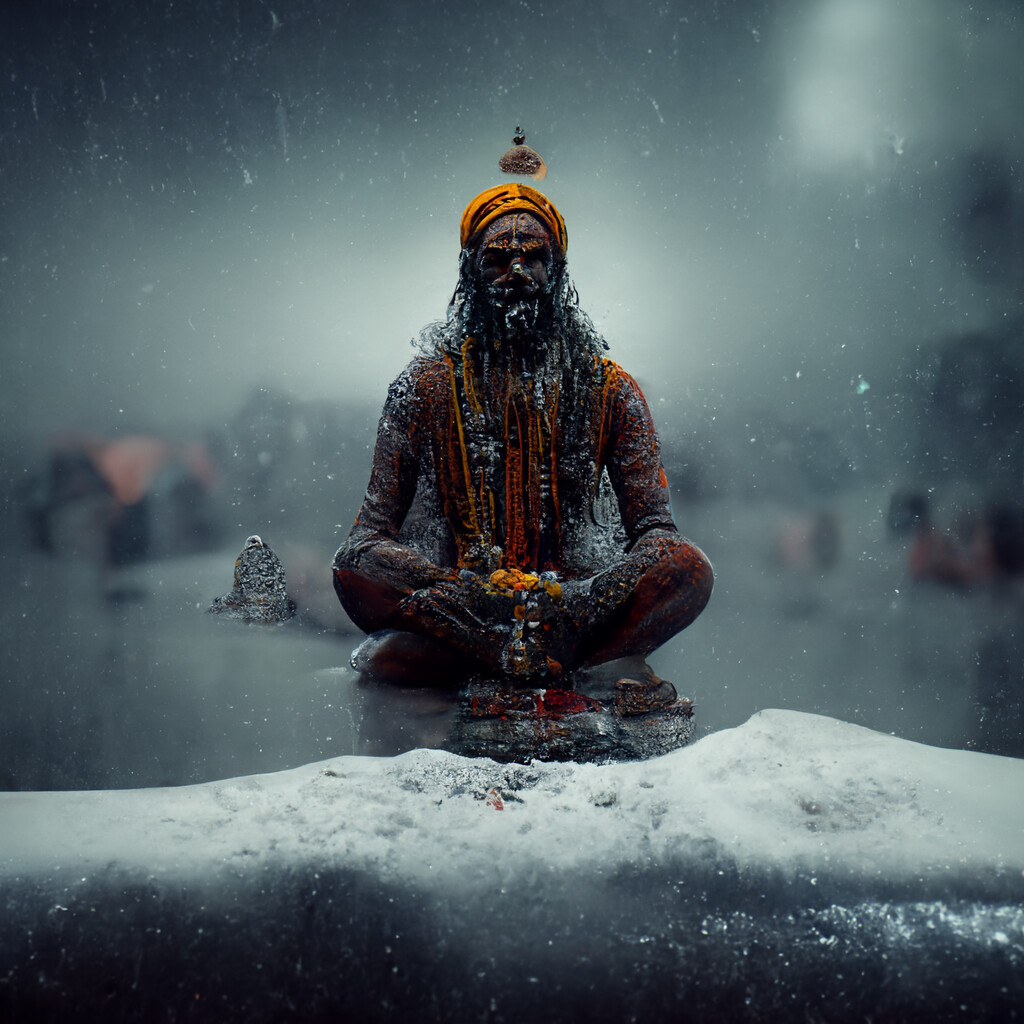
But still, we are in so much trouble. We look for clues. Once a sadhu was asked, “What is the clue? Can you give me some proof that I am Brahman right now?”. His answer was interesting. He said, “You exist isn’t it in spite of everything? Life after lifetime you have traveled body after bodies have died. Has anyone been able to destroy you? No! Let the worst of troubles come to you, see life as full of miseries, let the worst of miseries come, let death come. But still, you will not die. What does that mean? That you are and there is something immortal about you. I am experiencing so many sufferings, you’re experiencing, suffering, pleasure, worldly life, spiritual life and God realization. It shows this constant movement”.

Swami Vivekananda’s Advaitihik definition of bhakti, in Bhakti Yoga can be understood when he says, “Look at the world around you. You want to see what bhakti is. Look at the world around you. People are struggling. Somebody is mad after money, somebody is mad after power, a sense of pleasure, and the people are struggling continuously. Human beings to animals all are in this continuous movement for fulfillment, overcoming, suffering, and attaining some kind of peace and joy. This huge cosmic movement towards the divine is the expression of bhakti. This Cosmic bhakti is everywhere going on we are full of it and you cannot stop until you reach the divine”. This is where God lies. This is where we are. This is our real nature. This is the real deeper meaning of tat tvam asi.

May Sri Ramakrishna, Sri Guru Maharaja, Ma Sharada Devi and Swami Vivekananda bless us with showering their blessings upon all. May we realize this Grand Vision in this very life itself. However, one-day Mahapurush Maharaj Swami Shivanandi was asked by somebody saying, “Please bless me that I may have God’s realization in this life”. The monk said, “Give up such calculations of this life or that life. It is stopping you from complete surrender. Just surrender to the Divine mother. She will take care of you. She has been taking care of you till now and she will take care of you in the future”. We pray that the Lord may bless us with this Divine realization. Om Shanti, Shanti, Shanti!
Main video link:
Center for Indic Studies is now on Telegram. For regular updates on Indic Varta, Indic Talks and Indic Courses at CIS, please subscribe to our telegram channel !
- 17 min read
- 0
- 0








